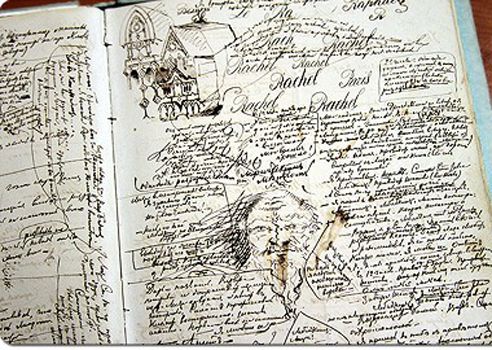Reading time: Less than 1 minute
This is my weekly installment of “writing about writing,” in which I scan the world to find websites, books and articles to help other writers. Today I discuss a blog post about the working style of Fyodor Dostoevsky….
I have not yet read any of the novels of Fyodor Dostoevsky. (Back when I studied English literature, 40 years ago, I remember a professor telling me that most students tended to prefer either French or Russian novelists, but not both. Having already fallen under the thrall of Zola, Flaubert and Balzac, I took the prof at her word and ignored the Russians.)
I might need to change my mind, however, after reading a fascinating blog post on the working style of Dostoevsky. Before writing his books, the writer apparently produced thousands of words of text — and drawings — in which he explored the plot points, characters and ideas he wanted to write about. A picture of one of these texts appears above, but here is how the blog post described them:
[They]… look like mazes or treasure hunt maps, filled with pictures and number codes. They are beautiful and bizarre….Dostoevsky’s drafts are richly illustrated. The most common elements are faces, oak leaves, fleurons (Gothic ornaments that look like cross-shaped flowers), calligraphy, and Gothic architecture, especially windows, towers, and arches.
I also enjoyed the blogger’s description of visiting the museum of Dostoevsky in Moscow — guarded by “a bitter young woman, an aspiring writer who barely survives on her pitiful salary–but refuses to leave her Dostoevsky haunt.”
Next on my agenda? Reading either Crime and Punishment or Brothers Karamazov. And planning a trip to Russia once we get through this pandemic.
My thanks to reader Petruta Bunaciu for drawing this blog post to my attention.
P.S. Be sure to read about Dostoevsky’s polar bear theory here.
An earlier version of this post first appeared on my blog on Oct. 23/17.


